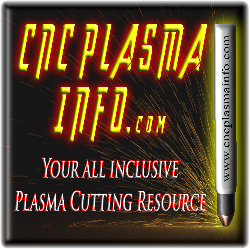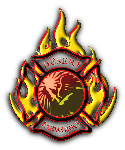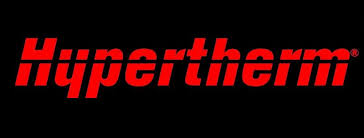What does "blow-back" mean? What are "lag lines"? The plasma cutting industry is full of unique words and phrases. Fortunately, this plasma cutting glossary has answers to those questions and more. Read on to learn what they mean. Who knows, you may just shock your friends with your new found knowledge.
AC: An electrical current that reverses its direction at regular intervals, such as 60 cycles alternating current (AC), or 60 hertz.
Angularity: The measurement of the plasma cut angle. For air plasma 1to 3% is normal.
Auto-voltage™ circuit: Input sensing that allows the system to run on a variety of voltages with no rewiring.
Blow-back: Patented technology that provides a pilot arc, used in Hypertherm Powermax series products.
Boost Conditioner™ circuit: Hypertherm technology that compensates for input voltage variations.
CNC: Computer Numeric Control
CAM: Computer Aided Manufacturing
Coaxial-assist ™ jet: Patented jet design boosts cutting speed as much as 20% over conventional designs.
Lag lines: Grooves in the cut surface that are the result of the plasma arc.
Dross: The molten waste material created by thermal cutting processes that often solidifies on the top or bottom of the plate. Also called slag, dross is produced in different amounts and can be easier or harder to remove depending on the cutting process that created it.
Dual-threshold™ pilot circuit: Hypertherm technology that significantly reduces nozzle wear by increasing the pilot current precisely when needed.
G Code: which has many variants, is the common name for the most widely used numerical control (NC) programming language. It is used mainly in computer-aided manufacturing to control automated machine tools. G-code is a language in which people tell computerized machine tools how to make something
ETR™ (Easy Torch Removal): A unique connector design that provides easy switching between hand and machine torches.
FineCut™: A line of Hypertherm consumables that deliver significant improvements in cut quality on thin-plate metals by providing a narrower kerf width, reduction in dross and virtually no heat-affected zone.
Heat-affected zone: The part of the metal that has undergone structural changes due to intense heat. Heat-affected zone (HAZ) cannot be seen. Although one of the side effects of HAZ can be a heat tint that is visible, the size of the heat tint is also affected by the surface condition of the plate. Therefore, the size of the heat tint and the heat-affected zone may not be the same.
HyLife® Electrodes: that last longer than ordinary designs by using the same patented technologies developed for advanced Hypertherm mechanized systems.
Kerf: The width of a cut made by the plasma arc.
Plasma: Plasma, sometimes called the fourth state of matter, is a high-temperature, ionized gas.
Plasma cutting: Process in which electrically conductive gas is harnessed and controlled. A torch holds consumable parts, which constrict and control the ionized gas stream or plasma arc for cutting most common metals.
Plasma Torch Parts:
SCFH: Standard Cubic feet per hour
SCFM: Standard Cubit feet per minute
This information was provided by















